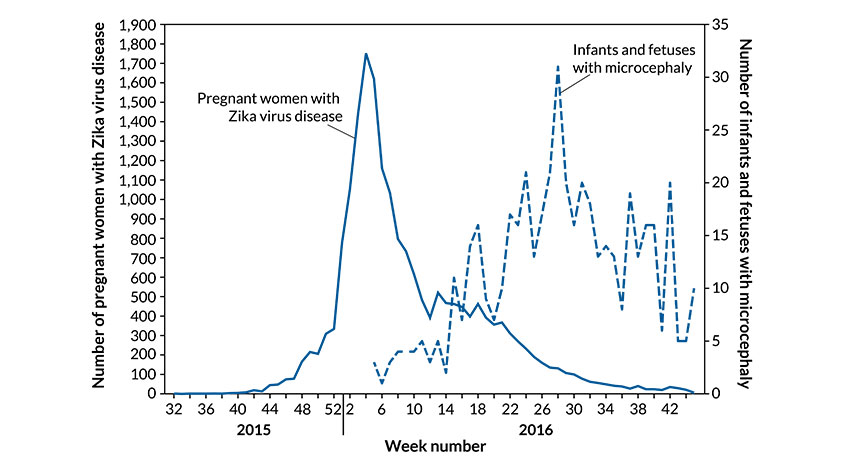Microcephaly cases surge in Colombia following rise in Zika infections

TIME LAG Zika infections among pregnant women (solid line and scale on left) in Colombia spiked in January (around week 4). About six months later, the country saw a drastic increase in the number of infants and fetuses with microcephaly (dotted line and scale on right).
CDC







